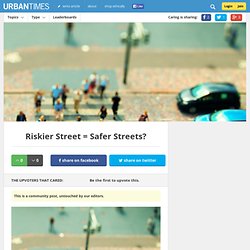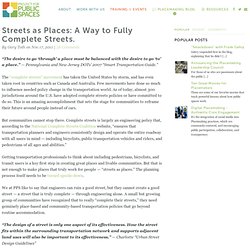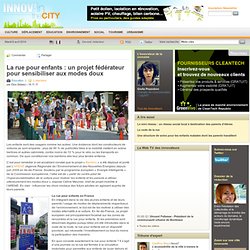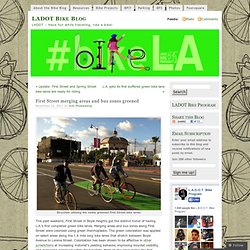

Riskier Street = Safer Streets? This is a community post, untouched by our editors.

Source: nurpax, flickr.com For most of us, when we’re walking in the city, the safest place to be is on the pavement or sidewalk. However a new movement in urban street design, called ‘Shared Space’, is challenging this kind of thinking. Shared Space streets aim to reduce the dominance of cars by getting people and vehicles to share the road space. Controversially, this sometimes includes removing kerbs so that there is no physical demarcation between the pavement and the rest of the street.
Riskier street = safer streets? The new research examined a range of streets, from traditional streets with kerbs to ‘Shared Surface’ streets, where it is hard to tell where the pavement ends and the carriageway begins, such as New Road in Brighton. Lower vehicle speeds;Removing kerbs;More people walking in the carriageway, which is encouraged by shared space design. Holistic place-making Does shared space work for everyone? Are Complete Streets Incomplete? “The desire to go ‘through’ a place must be balanced with the desire to go ‘to’ a place.” — Pennsylvania and New Jersey DOTs’ 2007 “Smart Transportation Guide.”

The “complete streets” movement has taken the United States by storm, and has even taken root in countries such as Canada and Australia. Few movements have done so much to influence needed policy change in the transportation world. As of today, almost 300 jurisdictions around the U.S. have adopted complete streets policies or have committed to do so. This is an amazing accomplishment that sets the stage for communities to reframe their future around people instead of cars. But communities cannot stop there. Getting transportation professionals to think about including pedestrians, bicyclists, and transit users is a key first step in creating great places and livable communities. “The design of a street is only one aspect of its effectiveness. PPS is helping communities realize a different vision of what transportation can be. La rue pour enfants : un projet fédérateur pour sensibiliser aux modes doux.
Les enfants sont des usagers comme les autres.

Une évidence dont les constructeurs de voitures se sont emparés : plus de 90 % de publicités liées à la mobilité mettent en scène berlines et autres cabriolets, contre moins de 10 % pour le vélo ou les transports en commun. De quoi conditionner nos bambins dès leur plus tendre enfance. C’est pour remédier à cet accablant constat que le projet « Bambini » a été déployé et porté par L’ARENE (Agence Régionale de l’Environnement et des Nouvelles Energies) depuis juin 2009 en Ile-de-France.
Soutenu par le programme européen « Energie Intelligente » de la Commission européenne, l’idée est de « partir du contre-pied de l’hypersociabilisation de la voiture pour motiver les enfants et les parents à utiliser ultérieurement les modes doux », expose Céline Meunier, chef de projet mobilité à l’ARENE. En clair : influencer les choix modaux des futurs adultes en agissant auprès de leurs parents. Zone de rencontre aménagée à Suresnes. First Street merging areas and bus zones greened « LADOT Bike Blog.
November 21, 2011 by JoJo Pewsawang Bicyclists utilizing the newly greened First Street bike lanes This past weekend, First Street in Boyle Heights got the distinct honor of having L.A.’s first completed green bike lanes.

Merging areas and bus zones along First Street were colorized using green thermoplastic. The green colorization was applied on select areas along the 1.6 mile long bike lanes that stretch between Boyle Avenue to Lorena Street. Colorization has been shown to be affective in other jurisdictions at increasing motorist’s yielding behavior, improving bicyclist visibility, and increasing perceived safety for bicyclists. First Ride on First Street LADOT Bicycle Coordinator Nate Baird rode the new bike lanes on Saturday.
Green bike lane symbol As he continues, he arrives at a greened segment denoting an alley, followed by a dashed segment denoting an intersection approach. Greened alleyway Green dashed segment Raw First Street Ride Video Like this: Like Loading...